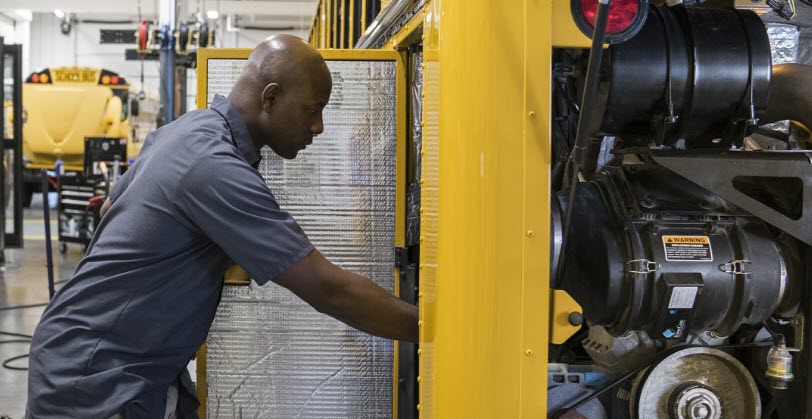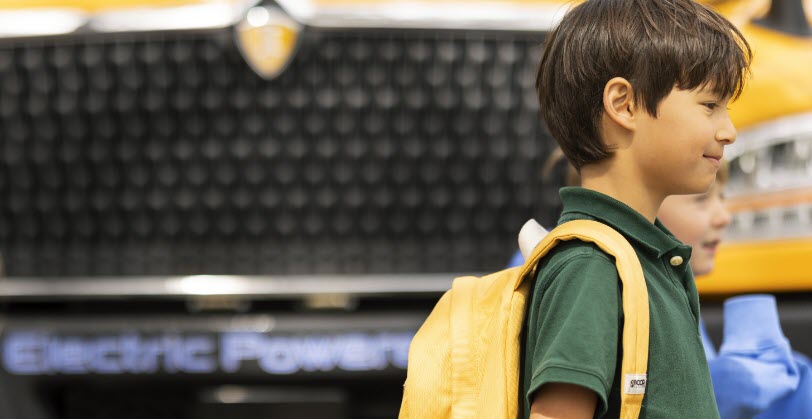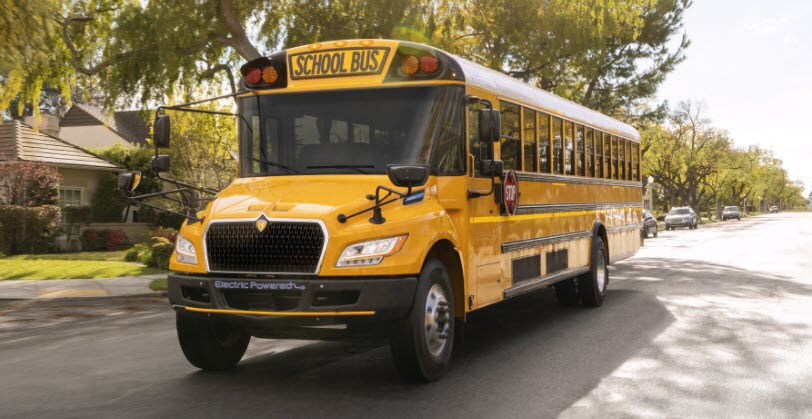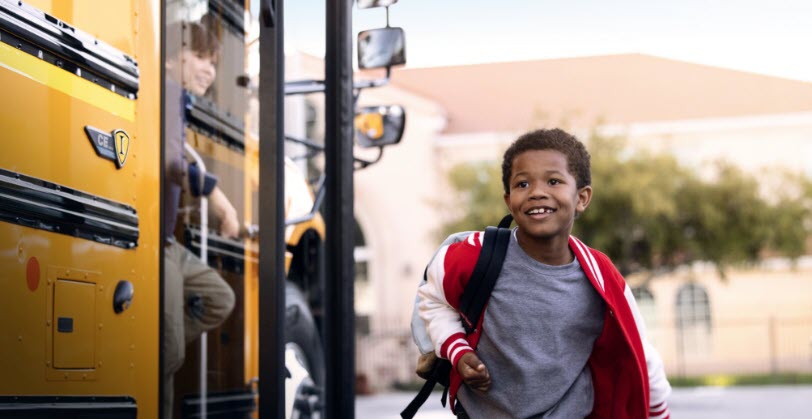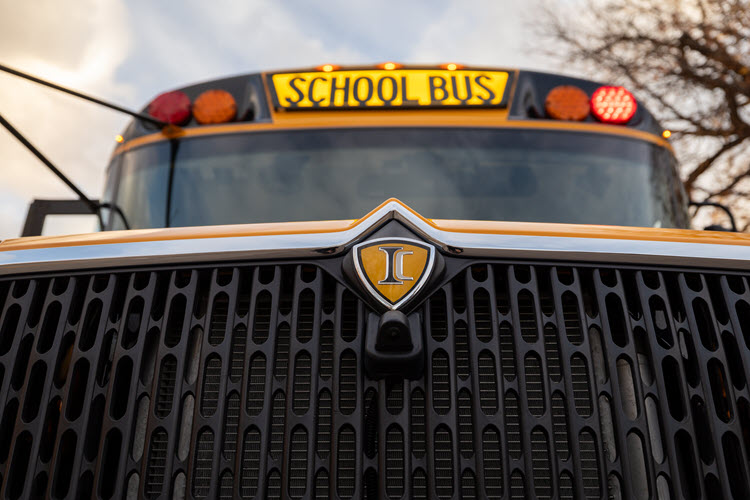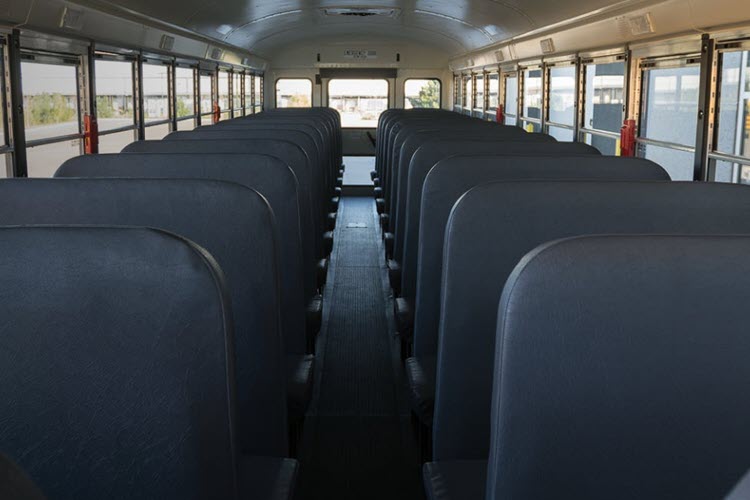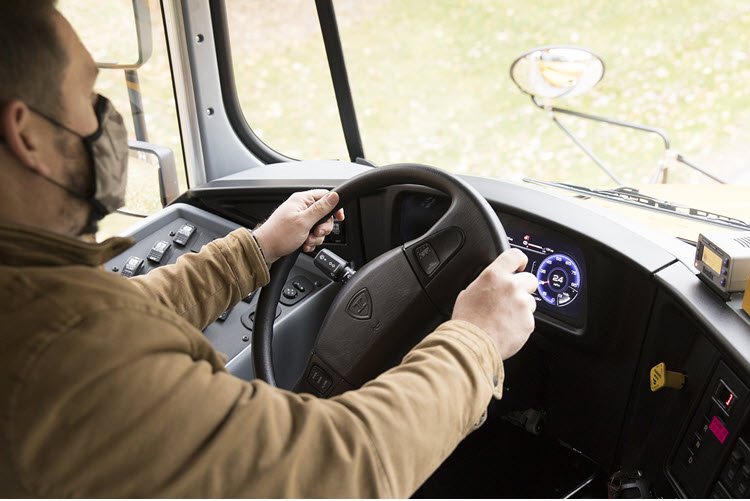Top Tips for End-of-School Maintenance
Check Safety Features
There’s nothing more important than safety on school buses. Here are three critical areas to include on your summer school bus inspection checklist.
School bus safety equipment – Test emergency exits and alarms, ensure that the external extension arm and stop sign are operating correctly and make sure all external and internal camera systems are working. If applicable, check that firmware for all safety, navigation and driver assisted/control systems is up to date and functioning.
Safety gear – Inspect fire extinguishers and recharge if needed according to the manufacturer’s recommendations. Review school bus first aid kit requirements and refill missing or expired supplies as needed. Check to make sure all roadside safety gear such as warning triangles and road flares are present and functional.
Brake system – Check pads, rotors, drums and brake lines to make sure brakes are working properly. To help keep seals and lubricated parts in good working order, drive buses monthly when not in use and exercise the brake system.
Tires – Examine tires for proper pressure, tread wear and tread depth. If needed, rotate tires.
Maintain Powertrain & Chassis
Summer is the perfect time to do maintenance and repairs to prevent service disruptions later since the downtime won’t impact active routes.
Engine – Review service records to make sure that regular maintenance is up to date and check all fluid levels. Inspect for oil leaks and the engine harness for proper routing/clipping.
Fuel system – Inspect fuel lines, filters and tanks for any signs of damage or leaks and address issues promptly to avoid costly problems later.
Chassis – Warm the engine to operating temperature and check the chassis. Lubricate all chassis components that have lubrication points.
Check Electrical System
Make sure your electrical systems are charged up and ready to go for fall.
Battery – Review battery terminals for corrosion or loose connections, inspect battery cases for cracks and test voltage levels with a multimeter.
Lights – Perform a full review of all lights including headlights, brake lights, turn signals and interior cabin lights.
Wiring – Check cables for cracks, fraying or loose connections.
Perform a Deep Clean
Giving your buses a thorough cleaning will provide a welcoming feeling for both riders and drivers and can help extend vehicle longevity.
Exterior – Remove dirt and other accumulated grime to improve the appearance and reduce the risk of rust and corrosion.
Interior – Sweep floors, clean windows and wipe down seats. Use an antibacterial cleaner on all high-touch areas like handles and buttons to remove dirt and germs.
Doors and windows – Spray dry lubricant on hinges, door controls and window tracks to keep them moving smoothly.
Pest control – Prevent pests from making a home in your fleet by cleaning out food debris, sealing entry points and setting pest deterrents.
Make Interior & Exterior Repairs
School buses take a lot of dings during the school year, both inside and out. The summer slowdown gives you time to get your fleet looking fresh again.
Exterior – Visually inspect the buses for dents, scratches or broken components — and repair them. Pay particular attention to safety-related items like turn indicators and headlights.
Interior – Perform a walk-through on each bus, looking for things like seat tears, graffiti or broken handles, and repair as needed.




